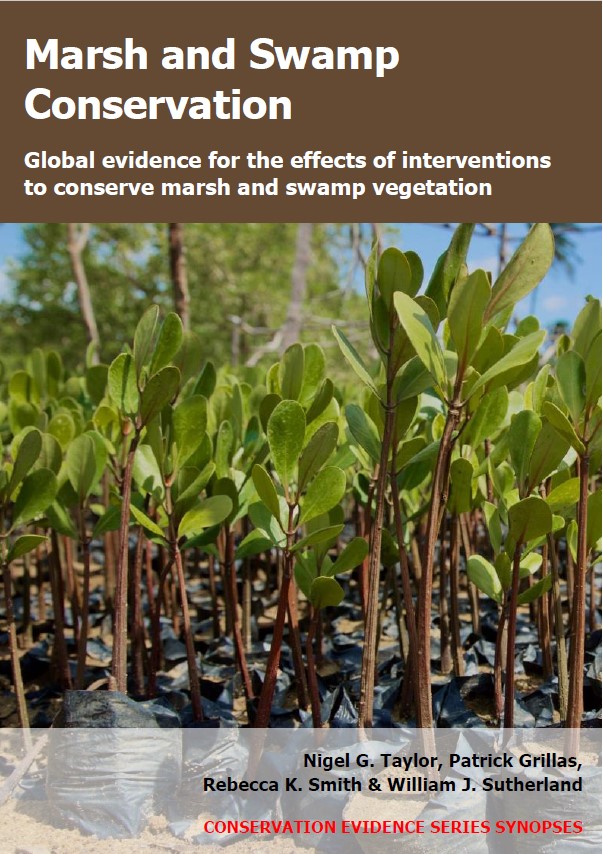Change season/timing of prescribed burning: freshwater marshes
-
Overall effectiveness category Unknown effectiveness (limited evidence)
-
Number of studies: 1
View assessment score
Hide assessment score
How is the evidence assessed?
-
Effectiveness
60% -
Certainty
30% -
Harms
10%
Study locations
Supporting evidence from individual studies
A replicated, randomized, controlled study in 1992 in an ephemeral freshwater marsh in Missouri, USA (Laubhan 1995) found that spring-burned plots had greater plant species richness and overall vegetation cover than summer-burned plots at the end of the growing season, and supported a different abundance of individual plant species. At the end of September, spring-burned plots had greater plant species richness (5.5 species/m2) than summer-burned plots (2.6 species/m2). Spring-burned plots had greater overall vegetation cover (94%) than summer-burned plots (23%). The most abundant plant species in spring-burned plots included ricecut grass Leersia oryzoides (cover: 50%; frequency: 97%), beggarticks Bidens spp. (cover: 31%; frequency: 100%) and marsh elder Iva ciliata (cover: 17%; frequency: 90%). The most abundant species in summer-burned plots included ricecut grass (cover: 5%; frequency: 97%) and sesbania Sesbania exaltala (cover: 5%; frequency: 70%). Beggarticks and marsh elder each had <1% cover and occurred in only 3% of quadrats, on average. Methods: In 1992, six 0.1-ha plots were established in a freshwater marsh managed for waterfowl (i.e. winter flooding followed by spring or summer drawdown). Three random plots were burned in spring (early April) and three were burned in summer (late July). In the summer-burned plots, vegetation was mown three days before burning. Cover of every plant species, and bare ground, were recorded in late September 1992 in ten 1-m2 quadrats/plot.
Study and other actions tested
Where has this evidence come from?
List of journals searched by synopsis
All the journals searched for all synopses
This Action forms part of the Action Synopsis:
Marsh and Swamp Conservation
Marsh and Swamp Conservation - Published 2021
Marsh and Swamp Synopsis





)_2023.JPG)














